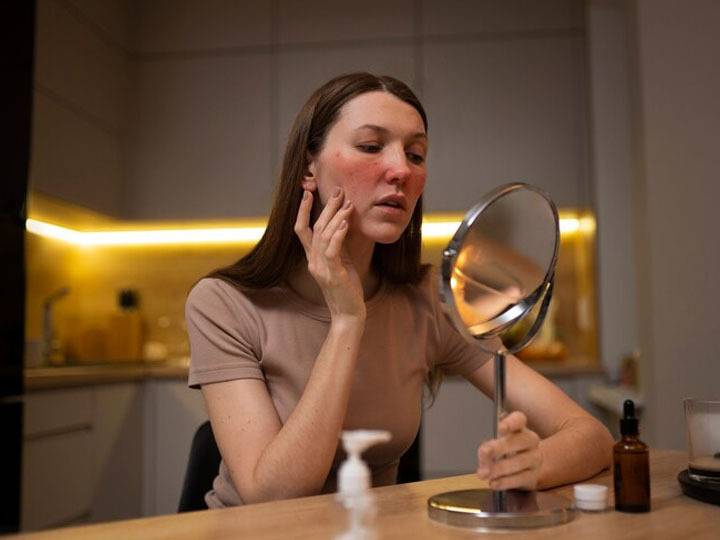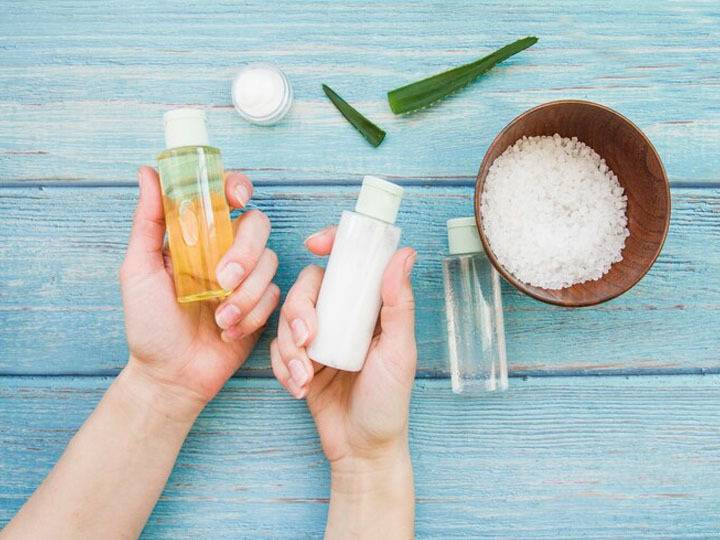While everyone’s experience with makeup varies, the onset of acne often shares a common beginning: a single pimple. This solitary blemish can swiftly multiply into a cluster, leading to frequent breakouts, scarring, struggles with caked-on makeup, oily skin, and more. Thus starts the challenging and seemingly never-ending journey through the struggles of dealing with acne.
The cardinal rule of skincare has always emphasized the importance of sunscreen. However, it’s crucial to grasp another skincare fundamental: No single product or treatment can entirely eliminate those stubborn blemishes from your skin. By combining targeted over-the-counter products, prescription medications, dermatologist-administered in-office treatments, and a healthy dose of patience, visible results can emerge within days. Since deciphering the code of acne can be intricate, it’s advisable to consult with your dermatologist to understand the underlying factors before addressing the surface. Take the advice not just from us but from your skin’s expert.
Causes of acne
Here’s some positive news: your diet is unlikely to be the culprit behind your breakouts. Acne is a result of multiple factors, including heightened sebum production, blocked pores, inflammation, and bacteria. Dr. Garshick explains that a specific process called hyperkeratinization, in which dead skin cells shed and clog hair follicles, is believed to contribute to acne. Additionally, hormonal imbalances during periods can also trigger acne breakouts. This is accompanied by increased oil production due to hormonal shifts, a rise in the prevalence of acne-related bacteria called Cutibacterium acne, and heightened inflammation

Now, let’s delve into the various forms of acne that might appear on your face. The prevalent types include blackheads and whiteheads, also known as open and closed comedones, which typically arise due to elevated oil production and blocked pores,” Dr. Garshick explains. “Acne presenting as red bumps, such as papules, pustules, nodules, and cysts, can emerge from a combination of inflammation, bacteria, and clogged pores.
How do you identify if your skin is susceptible to acne?
According to Dr. Penzi, individuals of all skin types have the potential to be ‘prone to acne.’ While oily skin and enlarged/clogged pores are traditionally seen as more susceptible to acne, even those with dry, sensitive skin can also be prone to acne.
In straightforward terms, experiencing frequent breakouts indicates that you probably have skin prone to acne. Dr. Garshick explains that acne-prone skin is more prone to breakouts, which can manifest as smaller clogged pores or larger, deeper breakouts. It’s important to note that while acne-prone skin may be oily, not everyone with acne-prone skin has oily skin.
Which ingredients are most effective for addressing acne?
Navigating the realm of acne-fighting products can be tricky. While the allure of any product claiming to combat acne may be strong, achieving the desired results without causing harm requires understanding your skin’s true needs. Dr. Garshick highlights the effectiveness of retinoids as one of the most potent ingredients for battling acne. “Retinoids are derivatives of vitamin A that assist in regulating skin cell turnover, preventing the accumulation of dead skin and clogged pores,” explains Dr. Garshick. These can be obtained over the counter (such as Adapalene) or through a dermatologist’s prescription, with the latter being more effective as dermatologists can prescribe higher-strength retinoids than those available in stores.

Another excellent ingredient is salicylic acid, described by Dr. Garshick as a beta hydroxy acid and an exfoliant that targets oil build-up and unclogs pores, while also aiding in the removal of dead skin. Additional effective ingredient choices encompass benzoyl peroxide or sulfur.
“Benzoyl peroxide is recognized for its antibacterial properties, combating acne-causing bacteria and mitigating inflammation associated with acne,” she clarifies. “Sulfur, with its antibacterial benefits, also aids in reducing excess oil.” Since many of the ingredients as mentioned earlier contribute to skin exfoliation, it’s crucial to replenish and calm the skin with hydrating solutions. Dr. Garshick recommends integrating “hydrating and nourishing ingredients like hyaluronic acid, ceramides, and niacinamide to fortify the skin barrier.”
What constitutes the most effective skincare routine for acne?
Acne care routines are highly individualized, meaning what proves effective for your favorite influencers or peers may yield different results for you. However, some essential products should be included in every daily regimen. It’s crucial to consult with your skincare expert regarding ingredients, frequency, and strength.
- Cleanser – Your skincare routine is incomplete without a facial cleanser. According to experts’s advice, opt for a mild hydrating cleanser or a facial wash containing an active ingredient such as salicylic acid or benzoyl peroxide, depending on your skin’s needs. According to Dr. Garshick, some individuals may choose a medicated cleanser with benzoyl peroxide or salicylic acid, while those with acne-prone skin might prefer a mild cleanser to better tolerate leave-on active ingredients such as prescriptions or over-the-counter retinoids or benzoyl peroxide. If you have oily skin, you might find a foaming or gel-based cleanser more suitable.

- Treatment: During this phase, incorporate a topical acne-fighting medication, whether it’s in the form of a serum or spot treatment. “For morning application, individuals addressing breakouts can use a spot treatment or a leave-on product, such as a toner, gel, or serum containing active ingredients like salicylic acid or benzoyl peroxide,” notes Dr. Garshick. Reserve retinol and more potent actives for the evening routine, applying them before your moisturizer. If you find yourself uncertain about the sequencing of your skincare products, consult our comprehensive guide for guidance.

- Moisturizer – Following the treatment of acne or spots, Dr. Garshick advises, “It is crucial to apply a gentle moisturizer to hydrate, soften, and smooth the skin. This helps support the skin barrier and enhances tolerance to acne-fighting ingredients.”

- Sunscreen: If you’re neglecting sunscreen, it’s time to reconsider. Sunscreen shields your skin from harmful UV rays, prevents the formation of dark spots, and keeps blemishes from becoming more pronounced.

Conclusion
Achieving clear and radiant skin is a journey that requires a tailored approach. Understanding the root causes of acne, from heightened sebum production to hormonal imbalances, is the first step. The effective ingredients highlighted by experts, such as retinoids, salicylic acid, benzoyl peroxide, and sulfur, form the arsenal against stubborn blemishes. Crafting a personalized skincare routine, incorporating a gentle cleanser, targeted treatments, a hydrating moisturizer, and the indispensable sunscreen, is key. Remember, consistency is crucial, and consulting with a dermatologist for personalized advice ensures a more effective and sustainable path to the clear, healthy skin you desire. Embrace this guide as your roadmap to conquer the challenges of acne and unveil your best skin yet.






